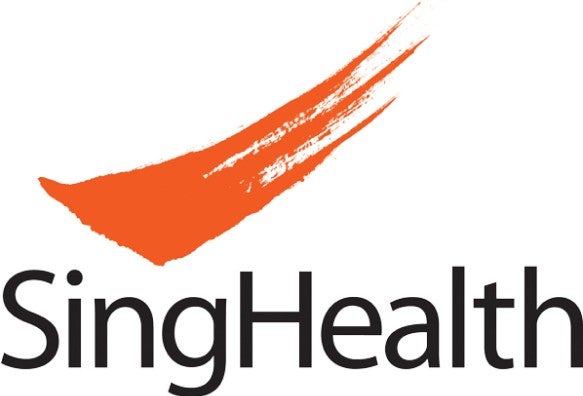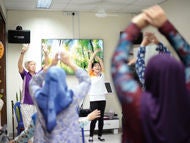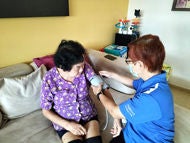What is - Dermatomyositis
What is dermatomyositis?
Dermatomyositis is a rare disease characterised by inflammation of the muscles and skin, presenting with muscle weakness and a distinctive skin rash. It affects approximately two to 10 individuals per million annually.

Symptoms of Dermatomyositis
What are the symptoms of dermatomyositis?
- Muscle weakness: Individuals with dermatomyositis often experience weakness, particularly of the proximal muscles, those closest to the trunk, such as the upper arms and muscles of the hips and thighs.
- Skin-related symptoms, including rashes such as:
- Gottron papules (raised bumps on the knuckles of both hands)
- Heliotrope rash (purplish rash on the eyelids)
- Joint pain and swelling: Dermatomyositis often affects small joints particularly those in the hands and feet. Joint involvement is often symmetric and can be progressive. Daily activities like moving around or sitting up can be challenging due to these joint symptoms.
- Breathing difficulties: Chest muscle involvement may cause breathing problems. Lung disease such as interstitial lung disease (ILD) can also occur with dermatomyositis and can cause a persistent dry cough and shortness of breath. ILD refers to a group of disorders that causes scarring of lung tissue, making them stiff and inelastic.
- Swallowing difficulties: Weakness of the oesophageal muscles can lead to problems swallowing, which can cause weight loss and malnutrition. Other conditions can also occur such as gastroesophageal reflux, heartburn, and aspiration pneumonia due to difficulty swallowing causing you to breathe food or liquids into your lungs.
- Raynaud’s phenomenon: This condition causes blood vessels to narrow, resulting in changes in skin colour and your fingers, toes, nose and ears to turn pale when exposed to cold temperatures. Ulcers can also form in the fingertips and toes due to reduced blood supply.
- Heart conditions: Dermatomyositis can also cause heart muscle inflammation. This may manifest as congestive heart failure and heart rhythm problems, leading to patients experiencing chest pain, heart palpitations or shortness of breath.

Heliotrope rash
When should you see a doctor?
If you experience any of the following symptoms, it is important to consult a doctor promptly to assess and address any underlying health concerns:
- Persistent muscle weakness, particularly in the shoulders, hips or neck/trunk
- Unexplained skin rashes, especially if they are purplish or appear on the eyelids or knuckles
- Changes in skin colour or ulcers when exposed to cold temperatures, particularly in the fingers or toes
- Persistent pain, swelling or stiffness in the joints
- The following symptoms in the context of associated muscle weakness, skin rash and/or joint symptoms as described above:
- Difficulty swallowing or frequent episodes of heartburn
- Shortness of breath or a persistent dry cough
- Chest pain, heart palpitations or other heart-related symptoms
Dermatomyositis - How to prevent
How is dermatomyositis prevented?
Dermatomyositis cannot be completely prevented as its exact cause is still unknown. However, you can reduce the risk of flare-ups or complications via the following:
- Sun protection: The rashes associated with dermatomyositis are photosensitive and can be triggered by exposure to ultraviolet light. Wearing sunscreen and protective clothing when outdoors especially during 10am to 4pm can prevent the occurrence of its related skin rashes.
- Regular exercise: Engage in low-impact physical activity to maintain muscle strength and flexibility. Consult your doctor or physiotherapist for a suitable exercise plan.
- Healthy diet: Maintain a balanced diet rich in vitamins and nutrients to support your immune system.
- Routine medical check-ups: Regularly see your doctor to monitor your condition, adjust treatments and manage any emerging symptoms early.
- Medication adherence: Take prescribed medications as directed.
Dermatomyositis - Causes and Risk Factors
What causes dermatomyositis?
The exact cause of dermatomyositis is not fully understood, but it is believed to be an autoimmune condition. In this case, the immune system mistakenly attacks the body's own healthy tissues, particularly the skin and muscles. Factors that may trigger this abnormal immune response include:
- Genetic predisposition: A family history of autoimmune diseases may increase susceptibility.
- Infections: Certain viral or bacterial infections could trigger the immune system's attack on muscles and skin.
- Environmental factors: Exposure to ultraviolet light, certain medications or pollutants may contribute to the onset of the condition.
- Cancer: In some cases, dermatomyositis is linked to an underlying malignancy, although the connection between the two remains unclear.
What are the risk factors for dermatomyositis?
Several factors can increase the likelihood of developing dermatomyositis:
- Age: The condition most commonly affects adults between 40 and 60 and children aged 5 to 15.
- Gender: Dermatomyositis is more common in women than men.
- Family history: Individuals with a family history of autoimmune diseases may have an increased risk.
- Other autoimmune conditions: People with other autoimmune diseases, such as lupus or rheumatoid arthritis, may be at a higher risk of other concomitant autoimmune diseases including dermatomyositis.
What are some potential complications from dermatomyositis?
- Increased cancer risk: Adults with dermatomyositis are at higher risk of developing certain cancers, such as ovarian, breast or lung cancer. A six-year study at a tertiary care hospital in Singapore found that approximately 30% of dermatomyositis patients developed cancer, with 78.3% of malignancies occurring within 13 months before or 4 months after the onset of dermatomyositis.
- Breathing issues: The condition can lead to breathing problems, lung issues and pneumonia.
- Cardiac problems: Dermatomyositis can affect the heart, causing irregular heartbeats and other cardiac complications.
- Swallowing difficulties: It can make swallowing difficult, increasing the risk of malnutrition and choking.
- Calcium deposits: Dermatomyositis can cause calcium deposits in the skin, muscles, and connective tissues. A 20-year study showed that Singaporeans diagnosed with juvenile dermatomyositis in childhood had a higher prevalence of calcium deposits compared to other Asian populations with dermatomyositis.
Diagnosis of Dermatomyositis
How is dermatomyositis diagnosed?
Dermatomyositis is diagnosed through a combination of physical exams, blood tests, imaging and biopsies. Key methods include:
- Physical examination: Checking for muscle weakness and skin rashes like Gottron papules or a heliotrope rash.
- Blood tests: Elevated muscle enzymes (CK) and myositis-specific autoantibodies (MSA) are early indicators.
- Muscle biopsy: The gold standard for confirming the condition by examining a tissue sample from weakened muscles.
- Imaging tests:
- Chest X-rays / high-resolution computed tomography (HRCT) scan for lung issues.
- Magnetic resonance imaging (MRI) of affected muscles to assess for muscle inflammation.
- Barium swallow to check for swallowing difficulties.
- Electromyography (EMG): Identifies affected muscles and differentiates dermatomyositis from other muscle disorders/conditions.
- Additional tests: Including renal and liver function tests, assessment of the cardiovascular system (such as electrocardiogram (ECG) and transthoracic echocardiogram (TTE)), and cancer screening.
Treatment for Dermatomyositis
How is dermatomyositis treated?
Dermatomyositis is treated with a combination of medications, lifestyle changes and therapies. Common treatments include:
- Medications: Corticosteroids such as prednisolone are often the first line of treatment to reduce muscle inflammation. Immunosuppressants may be prescribed to control the immune system’s response, especially in more severe cases. For skin symptoms, antimalarials or topical treatments may be used.
- Physical therapy: Regular physiotherapy is essential to maintain muscle strength, flexibility and joint mobility. Exercise routines should be guided by professionals to avoid overexertion, which can worsen symptoms.
- Skin management: Minimising sun exposure is important to prevent flare-ups. Wearing protective clothing and applying sunscreen can help. Itching and rashes may be managed with creams or medications.
- Treatment for calcium deposits: Some patients, particularly children, may develop calcium deposits in their muscles or skin as a complication. Treatment options include medications to manage the condition or surgery to remove the deposits if necessary.
- Speech and occupational therapy: If swallowing is affected, speech therapy can help manage difficulties. Changes in eating habits may also be necessary to prevent complications.
- Diet and nutrition: A balanced diet rich in protein and essential nutrients supports muscle health. A dietitian can help tailor a diet plan, especially if weight management or nutritional deficiencies are concerns.
- Emotional support: Living with a chronic condition like dermatomyositis can be emotionally challenging. Support from a medical social worker/psychologist or joining a support group can provide valuable coping strategies.
FAQs on Dermatomyositis
There is no definitive cure for dermatomyositis. However, it can be managed with medication, therapy and lifestyle changes, and patients can live fulfilling lives.
Dermatomyositis can affect people of all ages, but it is more common in children and adults between 40 and 60. Women are twice more likely to be affected by it than men. Even though the precise cause is unknown, there may be a genetic predisposition in some cases.
Dermatomyositis can potentially be triggered or exacerbated by various infections, including viral infections such as influenza (flu), hepatitis C, HIV (Human Immunodeficiency Virus) and Coxsackievirus, as well as bacterial infections like Staphylococcus aureus, Streptococcus and Mycoplasma pneumonia.
Dermatomyositis is not generally preventable because its exact cause is unknown, and it is believed to have an autoimmune component.
References
Okogbaa, J., & Batiste, L. (2019). Dermatomyositis: An Acute Flare and Current Treatments. Clinical Medicine Insights: Case Reports, 12, 117954761985537. https://doi.org/10.1177/1179547619855370
Chua, C. G., Low, J. Z., Lim, W. Y., & Manghani, M. (2022). Characteristics of anti-transcriptional intermediary factor 1 gamma autoantibody-positive dermatomyositis patients in Singapore. Annals of the Academy of Medicine, Singapore, 51(12), 755–765. https://doi.org/10.47102/annals-acadmedsg.2022278
Teh, K. L., Das, L., Book, Y. X., & Arkachaisri, T. (2020). AB1004 JUVENILE DERMATOMYOSITIS (JDM) IN SOUTHEAST ASIA: A 20-YEAR SINGAPORE EXPERIENCE. Annals of the Rheumatic Diseases, 79(Suppl 1), 1795-1795. https://doi.org/10.1136/annrheumdis-2020-eular.5929
The information provided is not intended as medical advice. Terms of use. Information provided by SingHealth.



















